Over a dozen military jets were destroyed or damaged in a massive drone strike against a Russian airbase overnight, Kyiv claims, while asserting a like-for-like drone strike by Russian forces against a Ukrainian base failed to damage aircraft.
Ukraine launched one of its largest drone strikes against Russia of the war overnight, they said on Friday morning, claiming some 50 drones were sent to a military airfield in Morozovsk, Rostov Oblast around 60 miles east of the Ukrainian border. A statement by Ukrainian intelligence services, which launched the raid, claimed the Russian airbase is home to Su-34 fast bomber and and Su-27 fighter jets.
The Ukrainian intelligence agency hailed the “impressive” outcome of their operation, claiming “at least” six Russian military aircraft destroyed and eight damaged, as well as 20 Russian soldiers killed or injured. They said the “special operation” would “significantly reduce the combat potential” of Russia to strike at Ukraine.
As is typical in the Ukraine war, Moscow had its own version of events, stating it had shot down or otherwise intercepted 44 drones in the Morozovsky area and that the only damage was to a local power substation.
Meanwhile, Russia launched its own drone and missile strikes against Ukraine overnight, also targeting a military airfield as both sides apparently attempt to degrade the airpower of the other without resorting to the complex business of shooting down jets mid-flight. Ukraine dismissed the effectiveness of the Russian strike, saying that while hangar buildings at the Korotych airfield near Kharkiv were indeed damaged, the facility is actually disused so there was no equipment or personnel present to be hit.
Fighting the Russian air force is a particular priority for Ukraine, particularly as Russia switches its strategy to launching large numbers of cheap, plentiful, and powerful glide bombs at Ukrainian positions. Converted from legacy Soviet-era ‘dumb’ munitions, glide bombs kits strap folding wings, a control tail, and simple satellite navigation kit to the bombs to make a cost-effective guided weapon.
Each of the converted KAB-1500 bombs weighs one and a half tons or 33,000 pounds, most of which is the high explosive warhead.
Russia Having Some Success Jamming Advanced Western Guided Bombs, Pentagon Leaks Say https://t.co/Vxbz3bjVHO
— Breitbart London (@BreitbartLondon) April 14, 2023
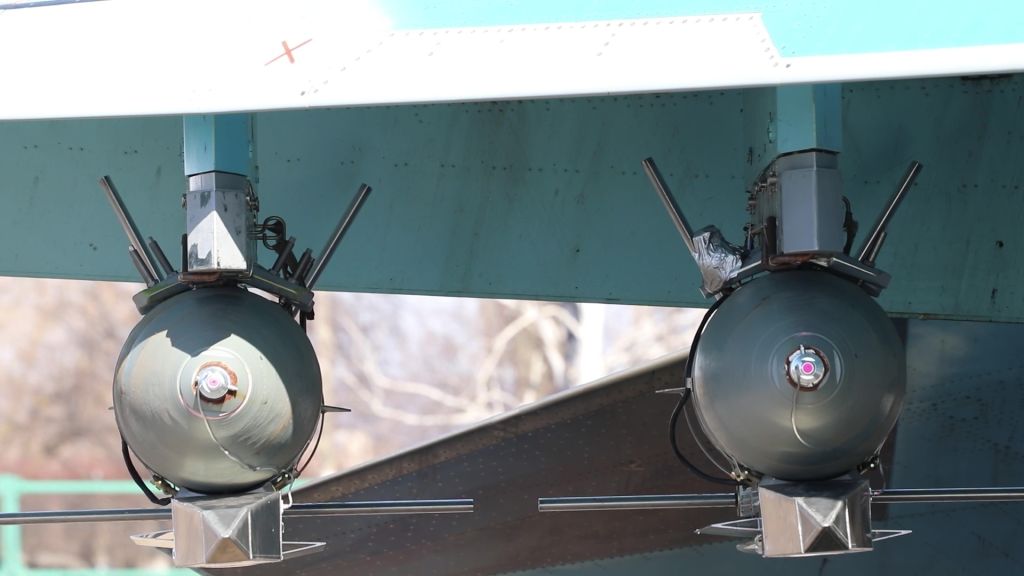
RUSSIA – MARCH 08: Russian Su-34 bomber seen in Russia before glide kit converted FAB-500 hit Ukrainian targets in the direction of Avdeevka area on March 08, 2024. (Photo by Russian Defense Ministry/Handout/Anadolu via Getty Images)
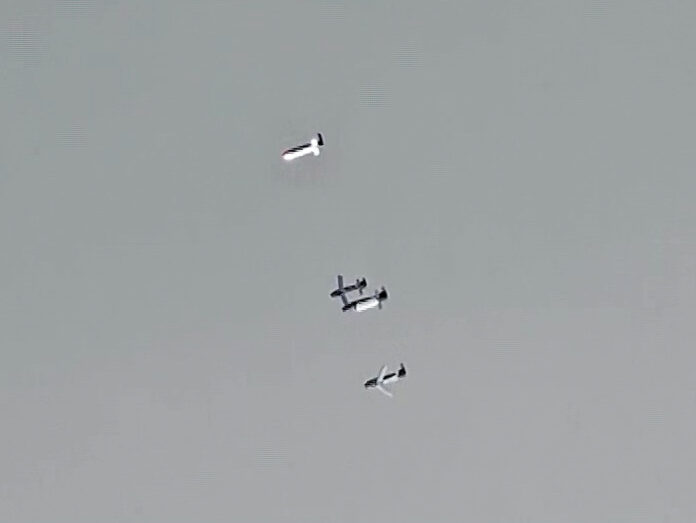
UNSPECIFIED – MARCH 29: A screen grab captured from a video shows glide bombs in flight shortly after being dropped from a Su-34 fighter-bomber in the South Donetsk direction on March 29, 2024. (Photo by Russian Defense Ministry / Handout/Anadolu via Getty Images)
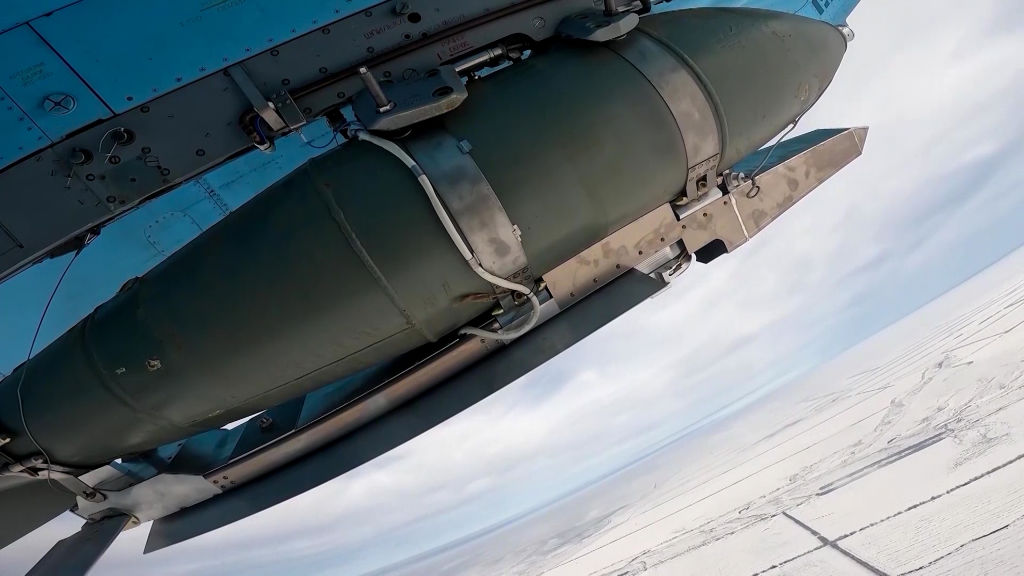
UNSPECIFIED – MARCH 29: A screen grab captured from a video shows crews of Su-34 fighter-bombers prepare to attack Ukrainian forces in the South Donetsk direction on March 29, 2024. (Photo by Russian Defense Ministry / Handout/Anadolu via Getty Images)
As reported, Ukraine also has its own version of the Russian glide bombs, which uses American GPS rather than Russian GLONASS satellites for navigation, but is otherwise conceptually the same. The Australian-developed JDAM-ER uses a navigation kit and glider wings attached to Vietnam-era GBU Paveway bombs and reportedly has a 45 mile glide range to target.
While Ukraine has air defence systems attempting to bat away Russian attacks daily, the glide bombs once released from their aircraft cover the 25-plus miles to target very quickly, are comparatively small, and have no heat signature like a missile would. The best option, then, is to take out the aircraft before they can drop the gliders, and Ukrainian media claimed today the airbase targeted in their overnight strike is “used by Russian bombers that have been launching guided aerial bombs at Ukraine´s cities and frontline positions”.
Further:
The enemy is actively using aircraft to terrorize the border cities of Ukraine and settlements on the front line, dropping guided bombs and general-purpose air-dropped bombs… The dominance of Russian aviation is an obstacle to the de-occupation of the occupied territories. Air bombs are a weapon of terrible destructive power that literally “changes the landscape.
The only way to defend against Russian bombs is to destroy enemy planes. Air defence forces have already made significant progress in this area, but it is still insufficient for a drastic change.
Another part of this puzzle, Ukraine says, is deploying advanced fighter jets of their own — the U.S.-made F-16 in other words — to the frontline to tackle with Russian bombers. “We expect that partners will contribute to realizing this goal in the near future”, they said this morning, something of a departure from combative rhetoric of just days ago when Ukraine declared F-16 donations were no longer relevant as they had taken too long to arrive.
A “senior officer” reportedly told Politico that Ukraine was in a persistent state of asking for weapon systems from its Western allies and them only arriving after the window for their being useful had passed. An example of this was given as the F-16, the source apparently saying: “Every weapon has its own right time. F-16s were needed in 2023; they won’t be right for 2024” because Russia had already done preparatory work to counter them.
To what degree those remarks were a reflection of reality, a headline-grabbing means to publicise Ukraine’s urgent call for more artillery ammunition deliveries, or an expectation-management exercise is not clear.
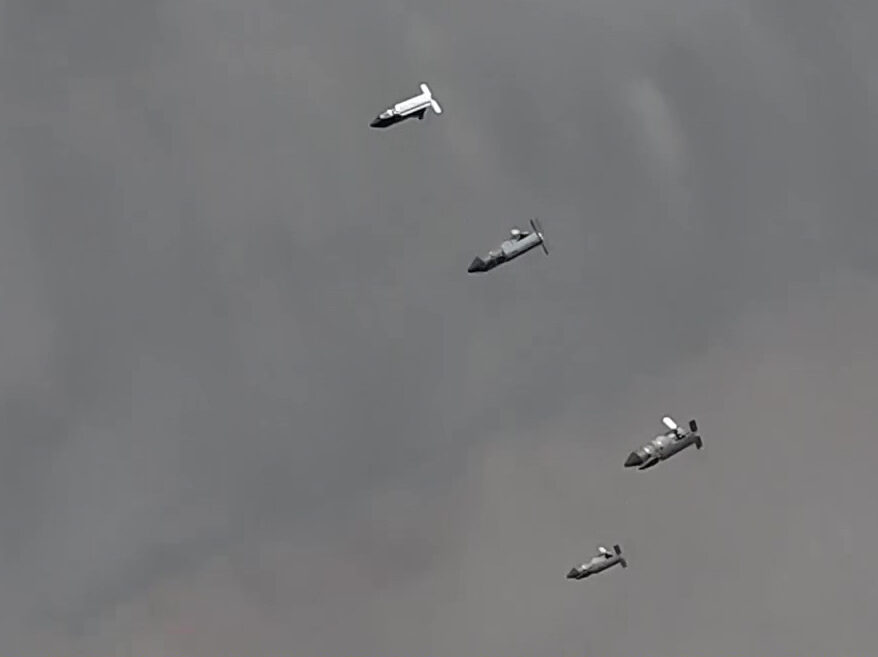
RUSSIA – MARCH 18: A screen grab captured from a video shows glide bombs in flight shortly after being dropped from a Su-34 fighter-bomber in the direction of South Donetsk area on March 18, 2024. (Photo by Russian Defense Ministry/Handout/Anadolu via Getty Images)

RUSSIA – MARCH 18: The Russian Su-34 bomber aircraft and FAB-500 bombs equipped with high-precision guidance is seen before takes off to hit Ukrainian targets and troops in the direction of the South Donetsk area on March 18, 2024. (Photo by Russian Defense Ministry/Handout/Anadolu via Getty Images)
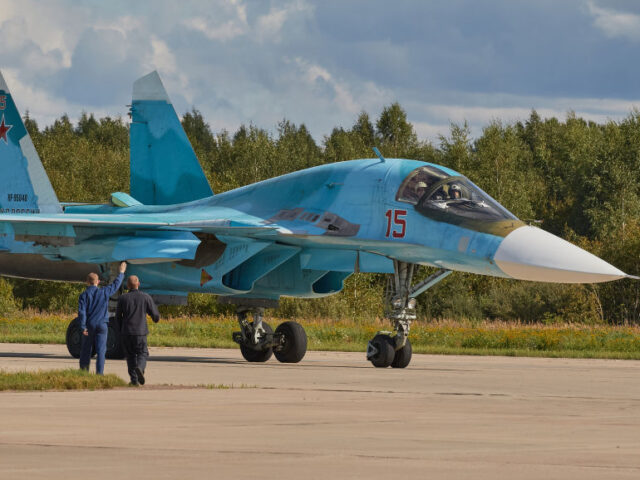
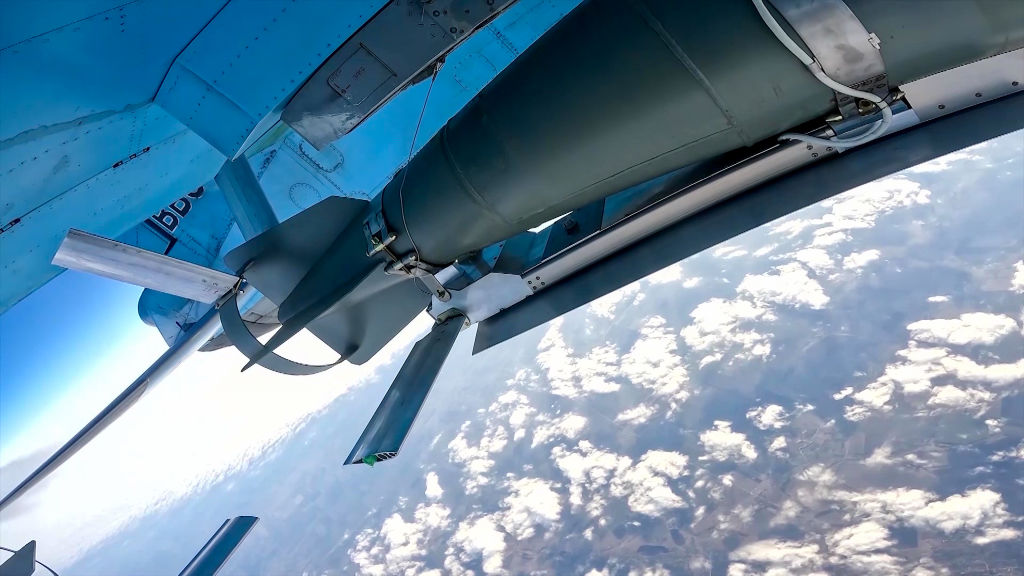
COMMENTS
Please let us know if you're having issues with commenting.